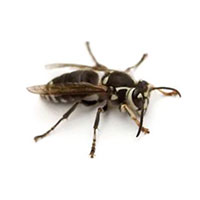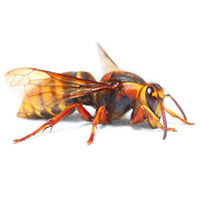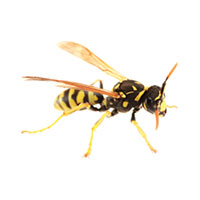Bald-Faced Hornets in Wisconsin
Bald-faced hornets look similar to yellow jackets, but instead of yellow, they have white to cream-colored markings. Bald-faced hornets are relatively large flying insects and will defend their nests aggressively when they feel there is a threat. These beneficial wasps live in colonies with thousands of individuals and would be a lesser threat to humans if they did not nest in structural voids, attics, and cavities associated with landscaping features.
Bald-Faced Hornet Habitat & Nests
Nests are usually attached to a tree branch located in bushes, shrubbery, or a wooded area. However, they can also be attached to utility poles or under the eaves of houses, sheds, or other structures that provide protection. Nests will be at least three feet off the ground and as high as 60 feet or more. They are made of chewed wood fibers mixed with saliva, creating a gray-colored, paper-like material. Reaching up to 24″ in height and 18″ across, there is a single opening at the bottom to allow the hornets to fly in and out. Bald-faced hornet nests are built from scratch each year and the previous year’s nest cannot be reused.
Bald-Faced Hornets Behaviors & Threats
Even though bald-faced hornets are beneficial by preying on other pests, they are extremely aggressive and will attack anyone or anything that invades their space. The sting of a baldfaced hornet carries venom causing stings to hurt, itch and swell for about 24 hours. Because these hornets have smooth stingers, they can sting over and over again, whereas other stinging insects, like honey bees, are only able to attack once before their stinger falls off. Of course, as with all other insect stings, humans are at risk for allergic reactions.
If you find a bald-faced hornet nest on your home or property, do not attempt to remove it on your own as this can aggravate the colony and cause the hornets to sting. Nests should not be handled without the assistance of a pest control company.
Need help with Bald-Faced Hornets?
We'll call you! Leave your information below.





